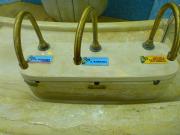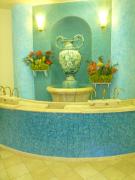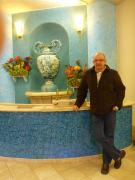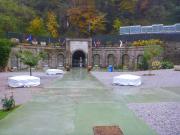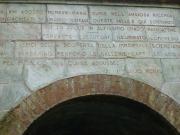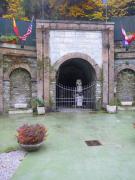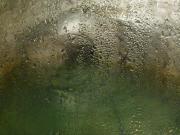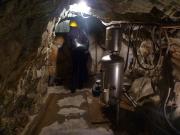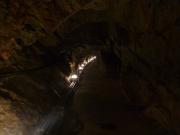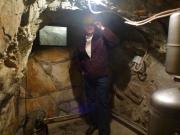
Lurisia and Marie Curie Even before the miner brought to light the spring and science could evaluate the beneficial quality of its properties, the popular observation was that “di Lurisia l’acqua ogni piaga lava” meaning that Lurisia water washed away every wound.
All the people from Lurisia knew, in fact, that this water had notable but unexplainable skin healing powers. Firstly they had discovered this by observing that wounds on their animal’s hooves soon healed if, during work, they crossed the Lurisia stream. Furthermore the stone-cutters of the losa caves traditionally cured skin wounds with a greenish mineral, found in the layers of rock of the town.
By the accidental pointing out of this fact by a cultured observer, who was in Lurisia in1913, a spiral of light opened out on the dark mystery which had always surrounded the water and strange greenish mineral. Professor Lincio, a famous expert of mineralogy, obtained permission to excavate in the area, so discovering the existence of large deposits of a particular radioactive mineral, autunite, in the stone caves of the valley In the last years of the First World War, these deposits drew the interest of the Ministry of War of the Italian State which, in that era, was starting to study the application of some minerals for military purposes.
To be able to direct research in a more efficient way, The Ministry proposed and obtained the interpellation of Marie Curie, a scientist of international fame, who right at that moment was busy researching radium earning her the Nobel prize. She agreed to the proposal of our Government and came to Italy in 1918. During her long stay, she visited the mineral deposits in Montecatini, Ischia, Capri, Albano Montegrotto and Larderello, arriving finally in Lurisia.
Here Marie Curie carried out numerical calculations of radioactivity and gathered samples of autonite, analysing them in-depth at the institute of Paris. In 1921 the Government Commission for Radioactivity gave the start in exploring the mineral deposit of Lurisia by excavating underground individualizing numerous mineralizations of autonite which nevertheless, revealed to be an insufficient quantity for a productive utilization. The activity was soon interrupted for this reason and the mine was abandoned. In the same years, though, the water from the mine was evaluated for its possible therapeutic use.

